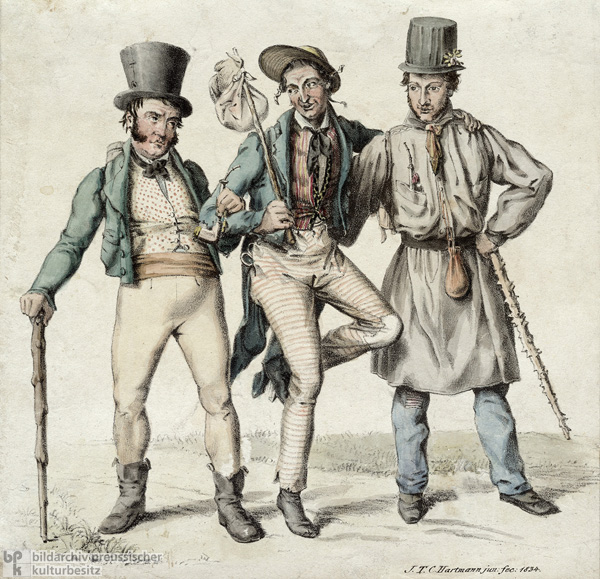













INTRODUCTION | DOCUMENTS | IMAGES | MAPS | EDITOR
|
In the first half of the nineteenth century, popular theaters in suburban Vienna produced a particular form of comedy called Posse, which drew on burlesque, commedia dell’arte, and fairy tales and incorporated varying degrees of crude humor, subtle social criticism, and, not least, recognizable local settings. Building on Ferdinand Raimund’s (1790-1836) popular fantasy plays in the Posse tradition, the author, actor, and theater director Johann Nepomuk Nestroy (1801-1862) enriched his satirical plays with catchy songs, classical quotations, and puns. Nestroy also incorporated improvised or planned commentaries on current affairs, a tactic that allowed him to circumvent Metternich’s strict system of literary censorship more than once – the censor might have approved the “harmless” written script, but he had much less chance to intervene against topical pinpricks served up during performances. The image shows Nestroy (on the left) with the two other leads in one of his first successful plays, The Evil Spirit of Lumpacivagabundus [Der böse Geist Lumpacivagabundus], which premiered in 1833. Lithograph after a drawing by J.T.C. Hartmann, 1834.
© Bildarchiv Preußischer Kulturbesitz |
 print version
print version return to image list
return to image list previous image
previous image
